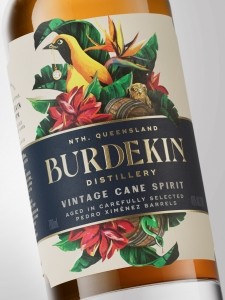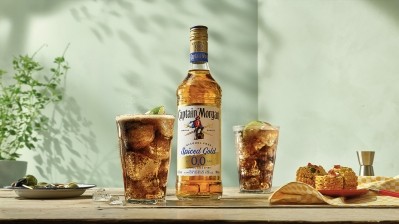Guest article
How brands can capitalize on rum's renaissance

in 2022, rum sales in the UK surpassed whisky, reaching over £1 billion, and the global craft rum market is projected to grow year on year by 5.5% until 2031.
Traditional branding tropes continue to dominate the category, but a fresh approach is required for any brand that wants to break through and capitalise on this change.
When most people think of rum branding, what comes to mind is pirates, sailors, Caribbean themes and palm trees - these cues have long dominated the category. While there will always be rum drinkers who enjoy those clichéd associations to summer and freedom, there is a growing group of consumers who care about provenance, taste, sustainability, and the people behind the brand.
Rum’s popularity follows in the footsteps of the gin industry's success, as consumers are becoming more receptive to premium rum offerings, emphasising quality over quantity. This shift aligns with the rise of cocktail culture, where the complexity of flavours and appreciation for the spirits used in mixology takes centre stage. Rum is increasingly seen as more than just a mixer, particularly by millennials.
To capture these drinkers’ attention, rum brands must break free from tired tropes and find new ways to communicate their unique stories.
Challenging perceptions
In today's saturated alcohol market, standing out is crucial. This is true for both new and established rum brands.
If you're an existing brand, it's time to re-evaluate your offerings and branding. This could mean introducing new flavours or creating new products that offer more complexity or a more premium option, but it could also mean refreshing the current design to reflect a more modern take on rum, which can be done by tapping into the unique heritage of the brand or the ingredients used.
Striking a balance between preserving the brand’s identity and embracing the new ways consumers see rum could lead to huge gains in the market.
For new rums, this is a chance to take a totally fresh angle on rum branding. When creating the award-winning designs for Burdekin Rum, for instance, Denomination focused on the local ingredients and the local area, as well as its sustainability.
Instead of relying on the worn-out pirate imagery, the brand design showcases the vibrant colours and abundant landscapes of North Queensland, where the rum is crafted.
By infusing the design with the natural beauty of the region and incorporating tropical birds, Burdekin’s design challenges those historic perceptions that rum is a sweet spirit to be mixed with coca cola.
There are, of course, other ways to break out of the mould. For Burdekin, it was the vibrancy and the colour of the region, but for others it could be simplicity and a stripped back design.
Another disruptive rum brand, Two Drifters, stands out because it puts sustainability at its heart. The simple and colourful branding, again, eschews the typical pirate imagery but does subtly incorporate a sea association. The two sailboats sit in calm waters with a geometric pattern, using a soothing colour palette. This artistic and sophisticated design strikes a balance between craft, sustainability, and a visually appealing aesthetic.
Other brands, like Equiano and Ten to One, actively challenge stereotypes and some of the problematic old-fashioned tropes, such as connections to Caribbean plantations. They both do this through their commitment to social causes and collaborations with artists of colour. By actively promoting social responsibility and diversity, they engage with consumers on a deeper level, at the same as looking beautiful and distinctive.
The power of storytelling
Tapping into a brand’s unique story is crucial. What makes this rum special needs to be shared in a compelling way and consumers appreciate authenticity and strong values. This could be emphasising the rich heritage and origins of the rum or highlighting the commitment to quality, sustainability, or community. This sort of storytelling can be a powerful tool and needs to shine through in the design: designs that resonate emotionally, allow consumers to connect with the brand on a deeper level.
By making the brand relatable and meaningful, rum producers can forge lasting connections and cultivate a loyal customer base and, right now, there is a huge opportunity for brands willing to adapt and innovate. As the rum industry continues to grow, it's essential that brands break away from the traditional cliches and embrace a fresh perspective. Understanding the evolving consumer preferences and using design to communicate values and unique stories will allow any rum brand to thrive.










